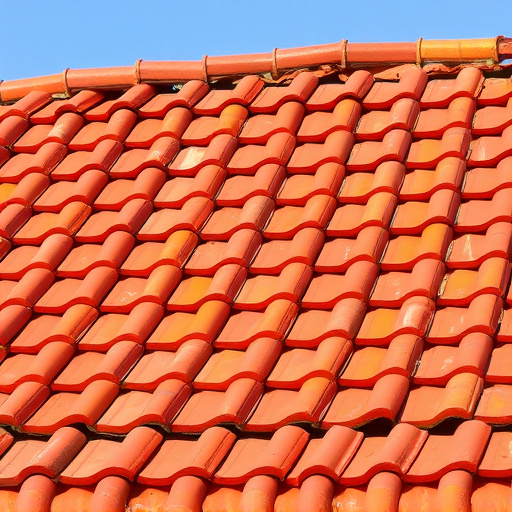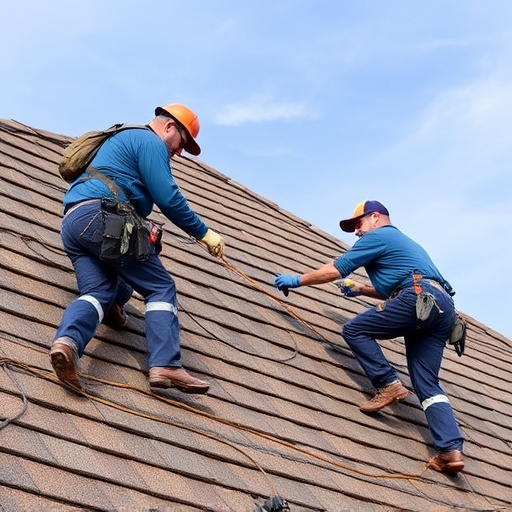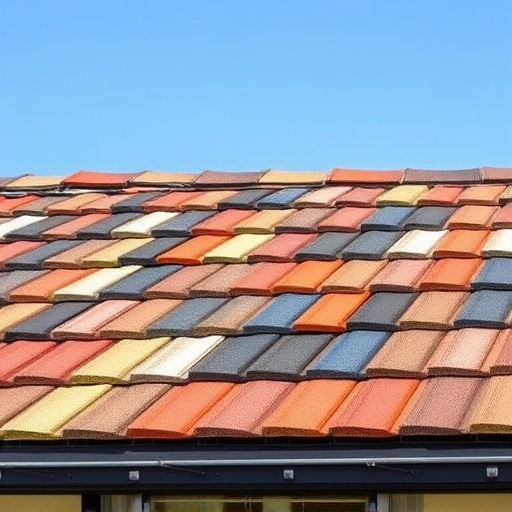Metal Siding: Boosts Property Value Fast – Ultimate Guide
Investing in metal siding boosts home value through durability, resistance to elements, and low main…….
Metal siding, a versatile and durable cladding material, has emerged as a prominent feature in the construction industry worldwide. This innovative solution offers architects, builders, and homeowners alike an array of aesthetic and functional benefits. From its traditional use in industrial buildings to its modern applications in residential and commercial projects, metal siding has left an indelible mark on the built environment. In this comprehensive article, we will embark on a journey through the world of metal siding, exploring its history, global impact, technological advancements, and its ever-evolving role in shaping our landscapes.
Definition: Metal siding refers to exterior cladding made from various metallic materials, primarily steel, aluminum, or copper. These panels or sheets are designed to cover and protect walls, roofs, or other structural elements, providing both aesthetic appeal and durable protection.
Core Components:
Metal Sheets/Panels: The primary material is typically pre-fabricated in large, flat sheets or molded into specific shapes. These panels can be made from steel, aluminum, copper, or their alloys, each offering unique properties.
Fastening Systems: Securely attaching the metal siding to the underlying structure is crucial. This includes screws, rivets, clips, or specialized fasteners designed to withstand environmental conditions.
Sealing and Coating: To prevent moisture ingress and corrosion, a sealing compound or protective coating is applied. Modern coatings enhance durability, offer various colors, and contribute to the overall aesthetics.
Historical Context: The use of metal for cladding dates back to ancient times, with early civilizations employing copper and iron for their structural qualities. However, modern metal siding as we know it today began gaining traction in the 20th century. Post-World War II construction booms led to increased adoption, particularly in industrial and commercial buildings where durability and low maintenance were paramount.
Significance: Metal siding offers a range of advantages:
Metal siding’s influence extends across borders, with diverse regional adaptations and trends shaping its global narrative:
| Region | Trends & Adaptations | Notable Examples |
|---|---|---|
| North America | Eco-friendly materials, color diversity. | Energy-efficient metal siding panels with recycled content. |
| Europe | Sustainable construction, historical replication. | Copper and steel siding for traditional European building aesthetics. |
| Asia Pacific | High-rise buildings, corrosion resistance. | Aluminum siding for rapid installation in urban high-rises. |
| Middle East | Desert-responsive design, heat reflectivity. | Stainless steel and aluminum siding with cooling properties. |
| Latin America | Affordability, local production. | Steel siding manufacturing hubs, providing cost-effective solutions. |
International Influence: Globalization has fostered the exchange of ideas and technologies related to metal siding. Countries like China, India, and Brazil have emerged as significant manufacturers, while Europe and North America drive innovation in sustainable and eco-friendly materials. This international collaboration and competition shape the future of metal siding, pushing it towards new heights of performance and design.
The global metal siding market, valued at USD 18.7 billion in 2021 (Source: Grand View Research), is expected to grow at a CAGR of 5.8% from 2022 to 2030. This growth is fueled by several economic factors:
Investment Patterns: Private equity firms, venture capitalists, and real estate investors have shown interest in metal siding manufacturers, recognizing its long-term growth potential. This influx of capital has facilitated technological advancements and market expansion.
The field of metal siding has witnessed significant innovations, pushing it towards a future filled with enhanced performance and design possibilities:
Advanced Coatings: Modern coatings offer improved durability, corrosion resistance, and aesthetic appeal. Polymer-based coatings provide excellent heat and UV protection, while ceramic coatings add a unique, high-end look.
Smart Siding: Integrating technology into metal siding is a growing trend. Smart panels can include sensors for temperature monitoring, impact detection, or even solar cells to generate electricity.
3D Printing: This additive manufacturing technique allows for complex and custom metal siding designs, offering endless creative possibilities.
Laser Cutting: Precision laser cutting enables intricate patterns and shapes, elevating the aesthetic value of metal cladding.
Future Potential: Technology is set to play a pivotal role in shaping the future of metal siding:
Governments worldwide have implemented policies and regulations that impact the metal siding industry, ensuring safety, sustainability, and fair trade practices:
Building Codes: Local building codes often dictate acceptable cladding materials, installation methods, and performance standards. Compliance is mandatory to obtain construction permits.
Environmental Regulations: Many countries have laws governing the use of sustainable and low-maintenance building materials, with metal siding being a prime candidate. These regulations drive innovation in eco-friendly products.
Import/Export Policies: Tariffs, quotas, and trade agreements influence the global movement of metal siding, shaping supply chains and market dynamics.
Product Safety Standards: Organizations like UL (Underwriters Laboratories) set safety standards for metal siding, ensuring product quality and performance.
Despite its numerous advantages, metal siding faces several challenges that have sparked debates and criticisms:
Initial Cost: Metal siding often carries a higher upfront cost compared to traditional materials, which can deter homeowners and developers. However, long-term savings through low maintenance and increased durability offset this initial investment.
Environmental Impact (Manufacturing): The production of metal siding, particularly steel, involves energy-intensive processes that contribute to carbon emissions. Manufacturers are addressing this by adopting sustainable practices, recycling, and exploring alternative production methods.
Limited Design Flexibility: While metal siding offers various styles, some critics argue it lacks the organic charm of natural materials. However, advancements in coatings and custom printing technologies are challenging this notion.
Strategies for Overcoming Challenges:
Incentives and Subsidies: Governments can provide financial incentives to encourage the adoption of metal siding, offsetting initial costs for homeowners and developers.
Educational Campaigns: Raising awareness about the long-term benefits and environmental advantages of metal siding can influence consumer choices.
Industry Collaboration: Metal siding manufacturers, architects, and builders should collaborate to develop innovative solutions that address both technical and aesthetic concerns.
In an effort to reduce the city’s carbon footprint, New York City introduced regulations promoting the use of energy-efficient materials, including metal siding. A leading developer partnered with a custom metal cladding manufacturer to create ‘Green Towers,’ luxury apartments featuring aluminum siding with integrated solar panels. This project not only met but exceeded energy efficiency standards, setting a new benchmark for sustainable construction in urban settings.
The historic city of Paris has meticulously preserved its architectural heritage, and metal siding plays a crucial role in this endeavor. Local artisans collaborate with architects to reproduce traditional copper cladding for iconic buildings, ensuring both authenticity and durability. This case study exemplifies how metal siding can enhance historical structures while meeting modern preservation standards.
A non-profit organization, ‘Build a Better Future,’ has been implementing sustainable school construction projects across Africa. They specify metal siding for their projects due to its durability and low maintenance requirements. By partnering with local manufacturers, they ensure job creation and reduce the need for frequent repairs, providing quality learning environments for students.
The future of metal siding is brimming with growth opportunities and innovative directions:
Customized Cladding: 3D printing technology will revolutionize custom cladding designs, allowing architects to bring their most creative visions to life.
Smart Buildings: Metal siding integrated with IoT (Internet of Things) devices can enable smart buildings that respond to environmental conditions, enhancing energy efficiency.
Sustainable Focus: With growing environmental consciousness, metal siding manufacturers will continue to develop eco-friendly products, focusing on recycled content and reduced production emissions.
Global Market Expansion: Emerging economies in Asia, Africa, and South America present significant growth opportunities, with increasing construction activities driving demand.
Metal siding has journeyed from a functional cladding material to a celebrated aspect of modern construction, shaping our built environment in profound ways. Its global impact, from urban skyscrapers to quaint residential homes, is a testament to its versatility and durability. As technology advances and environmental considerations become paramount, metal siding will continue to evolve, offering architects, builders, and homeowners alike endless possibilities.
By embracing innovation, addressing challenges, and navigating the ever-changing regulatory landscape, the metal siding industry is poised for sustained growth and success. This article has provided a comprehensive overview, shedding light on the significance, applications, and future prospects of this remarkable cladding material.

Investing in metal siding boosts home value through durability, resistance to elements, and low main…….

Metal siding is a durable and reliable choice for homeowners and businesses, offering superior resis…….

Metal siding for contemporary homes combines aesthetic appeal with durability, offering versatile pr…….